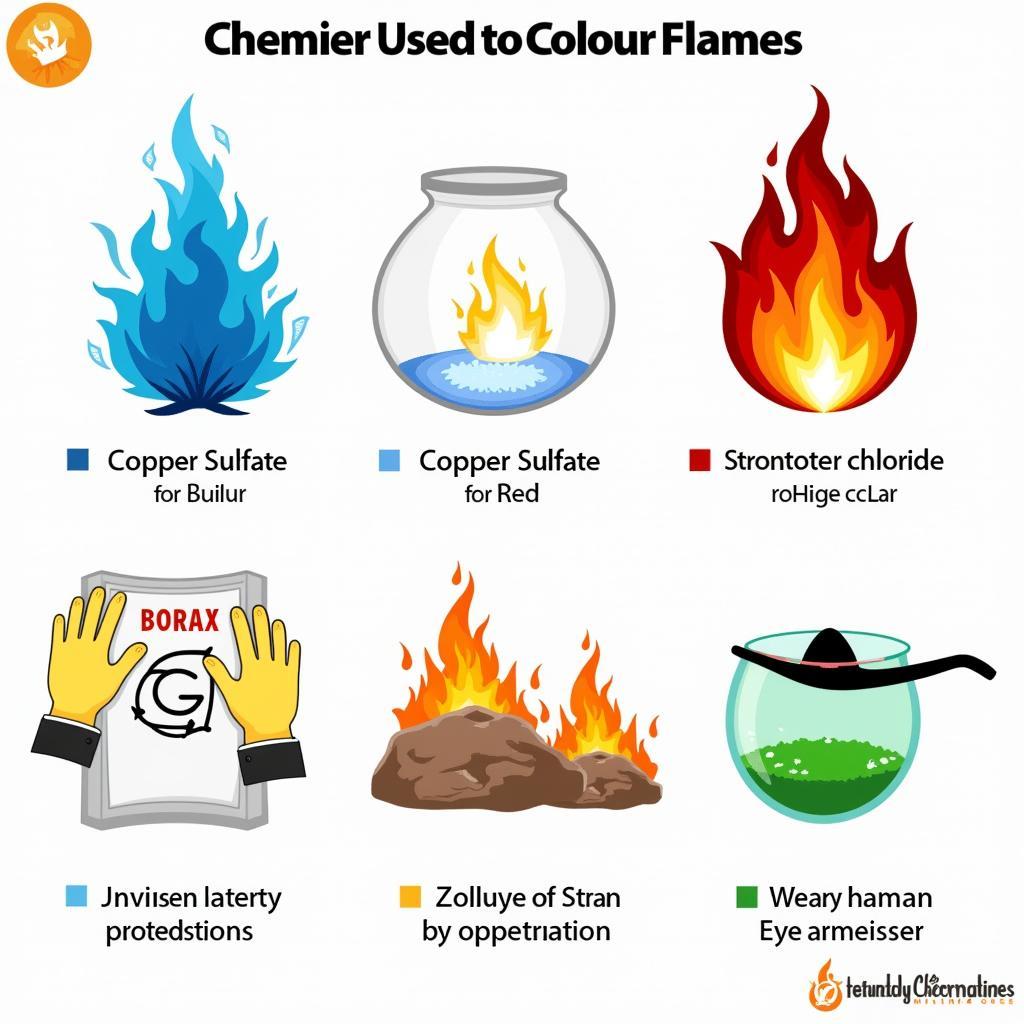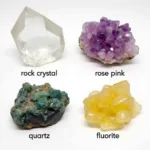How to color a fire? It’s a question that sparks curiosity in many, from the casual camper mesmerized by emerald flames to the pyrotechnician orchestrating a vibrant firework display. Achieving those captivating hues involves understanding the science behind color and fire, and selecting the right materials to introduce into the flames. Let’s delve into the fascinating world of colored fire.
 Coloring Fire with Chemicals
Coloring Fire with Chemicals
The Science Behind Coloring Fire
Fire, in its purest form, emits a yellow-orange glow. This color is a result of the incandescence of soot particles within the flame. Introducing certain chemicals, however, alters the wavelength of light emitted, resulting in a spectacle of different colors. These chemicals, typically metal salts, don’t actually burn; instead, their electrons absorb energy from the heat and jump to higher energy levels. As they fall back to their original state, they release energy in the form of light, producing vibrant colors. You can learn more about creating colorful flames at how to make fire turn colors.
Understanding the Role of Metal Salts
Different metal salts produce different colors. For instance, copper salts produce blue flames, while strontium salts create a brilliant red. This is because each element has a unique electron configuration, leading to distinct energy level transitions and, consequently, unique light emissions.
Methods for Coloring Fire
There are several ways to introduce these color-producing chemicals into a fire, each with its own advantages and disadvantages. One common method is to dissolve the salts in water and then soak porous materials like pinecones or wood chips in the solution. Once dried, these materials can be added to the fire. Another method is to create powder mixtures by finely grinding the salts and carefully adding them directly to the flames. For those interested in larger-scale color displays, the science behind fireworks provides further insight. Learn more about this at how do fireworks get their color.
Safety Precautions
While coloring fire can be a fascinating experiment, safety should always be paramount. Always handle chemicals with care, wearing appropriate safety gear like gloves and eye protection. Never use flammable liquids to accelerate the coloring process, and ensure adequate ventilation. Even seemingly harmless materials can produce toxic fumes when burned.
“Safety is key when experimenting with colored flames,” says Dr. Amelia Chen, a chemical engineer specializing in pyrotechnics. “Understanding the properties of the materials you are using is crucial for a safe and enjoyable experience.”
How to Color a Campfire
Coloring a campfire offers a unique and memorable experience, but requires careful consideration. Choose natural materials like dry wood or pinecones, and avoid using treated lumber or anything containing plastics or other harmful substances. Soaking your chosen materials in a solution of metal salts can create stunning effects. For instance, a solution of copper sulfate will create mesmerizing blue flames, perfect for a a colorado campfire.
Conclusion
Learning how to color a fire opens a world of creative possibilities, from enhancing the ambiance of a campfire to creating dazzling pyrotechnic displays. Remember to prioritize safety and responsible handling of chemicals. By understanding the science behind the process, you can safely and effectively create a captivating spectacle of color. If you are interested in pursuing a career that deals with fire, especially colored emergency lights used by firefighters, you could explore options like becoming a volunteer firefighter. Learn about what color lights do volunteer firefighters use. Or, if you’re in Colorado, learn about how to become a firefighter in colorado. With a little knowledge and careful preparation, you can transform ordinary flames into extraordinary displays of vibrant color.
FAQ
- What chemicals can I use to color fire?
- Are there any safety precautions I should take?
- Can I color a campfire?
- How do fireworks get their color?
- Where can I buy the chemicals needed?
- What are some common mistakes to avoid?
- Is it legal to color fire in my area?
Need support? Contact us 24/7 at Phone Number: 0373298888, Email: [email protected] Or visit us at: 86 Cầu Giấy, Hà Nội.

